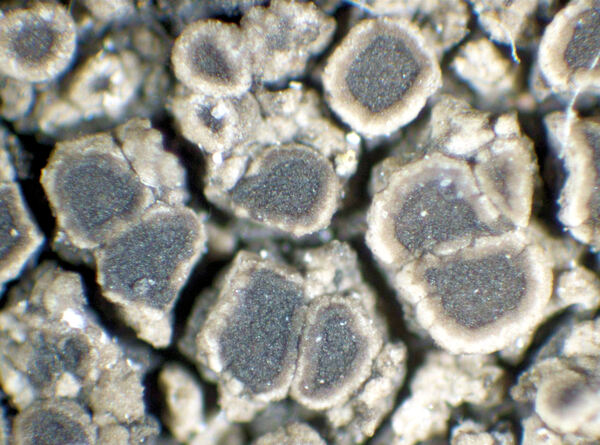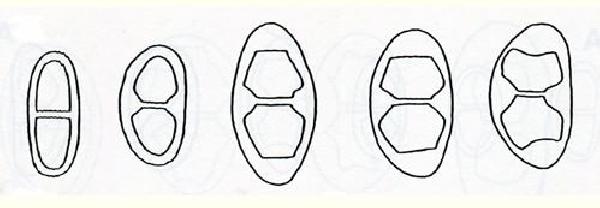Rinodina albana (A. Massal.) A. Massal.
Ric. Auton. Lich. Crost.: 15, 1952. Basionym: Hagenia albana A. Massal. - Verh. zool.-bot. Ges. Wien, 1: 222, 1853.
Synonyms: Berengeria albana (A. Massal.) Trevis.; Psora horiza sensu Hepp; Rinodina sophodes var. albana (A. Massal.) Bagl. & Carestia
Distribution: N - Ven (Lazzarin 2000b), TAA (Nascimbene & al. 2007b, 2014, Nascimbene 2014), Lomb (Lazzarin 2000b, Ravera & al. 2022), Piem (Isocrono & al. 2004), Emil, Lig. C - Tosc, Marc (Nimis & Tretiach 1999), Laz (TSB 13035), Abr (Loppi & al. 1999, Nimis & Tretiach 1999), Sar (Zedda 2002). S - Camp, Pugl, Si (Nascimbene & al. 2021).
Description: Thallus crustose, pale grey to dark grey-brown, rimose to verruciform or sometimes granular, without a distinct hypothallus, but often delimited by a brownish prothallus. Cortex of hyaline hyphae with globose lumina; medulla white, I-. Apothecia lecanorine, sessile, often contiguous and angular by mutual compression, (0.5-)0.7-1(-1.3) mm across, with a dark brown, flat to rarely slightly convex disc, a proper margin visible as a parathecial ring, and a thick, entire, usually persistent thalline margin. Thalline exciple corticate, the cortex up to 60 µm wide, of round, large, thin-walled more or less isodiametrical cells with 5-8(-10) µm wide, globose lumina, expanded below in a prosoplectenchymatous tissue, I-; proper exciple 15-20 µm wide laterally, expanding to 40 µm in upper part; epithecium brown, K-; hymenium colourless, 75-110(-130) µm high, I+ blue; paraphyses 1.7-2.3 µm thick at mid-level, the apical cells up to 4.5 µm wide; hypothecium colourless or yellowish, 50-95(-130) µm high, I+ blue. Asci 6(-8)-spored, clavate, the K/I+ blue tholus penetrated by a faintly amyloid apical cushion with parallel or diverging flanks, the wall K/I-, surrounded by a K/I+ blue outer layer, Lecanora-type. Ascospores 1-septate, not constricted at septum, brown, ellipsoid, (16-)18-23(-26) x (8.5-)10-12(-14) µm, often poorly developed, Physcia-type, without a torus and with well-developed lumina, the wall strongly warted already in young spores, with ontogeny of type A (apical wall thickening after septum formation). Pycnidia frequent, especially around the base of apothecia, black, immersed. Conidia bacilliform. Photobiont chlorococcoid. Spot tests: K-, C-, KC-, P-, UV-. Chemistry: without lichen substances.Note: a temperate species found on isolated deciduous trees with more or less smooth bark; often confused with similar species and perhaps more widespread.
Growth form: Crustose
Substrata: bark
Photobiont: green algae other than Trentepohlia
Reproductive strategy: mainly sexual
Commonnes-rarity: (info)
Alpine belt: absent
Subalpine belt: absent
Oromediterranean belt: absent
Montane belt: rather rare
Submediterranean belt: very rare
Padanian area: absent
Humid submediterranean belt: rare
Humid mediterranean belt: absent
Dry mediterranean belt: absent

Predictive model
Herbarium samples
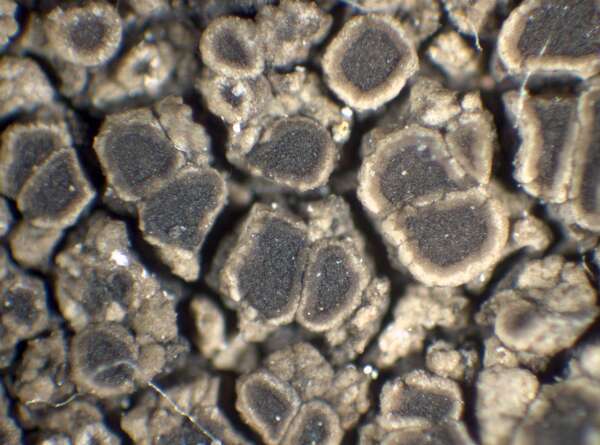

P.L. Nimis; Owner: Department of Life Sciences, University of Trieste
Herbarium: TSB (13035)
2002/05/13
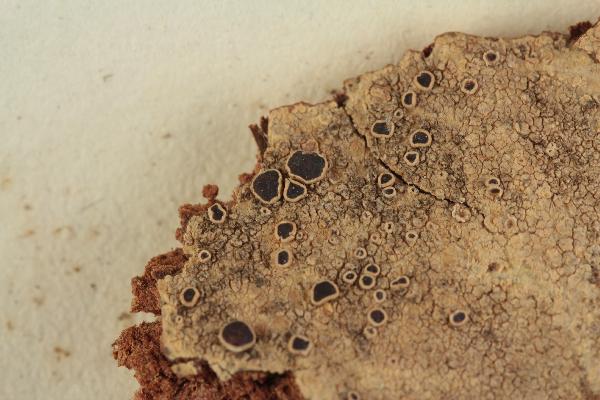
Collezione lichenologica Abramo Massalongo del Museo di Storia Naturale G. Ligabue di Venezia - Autori: Seggi, Linda; Trabucco, Raffaella Proprietà: Fondazione Musei Civici di Venezia - CC BY-NC
Italy, Veneto, In M. Alba ad Fagos 1855
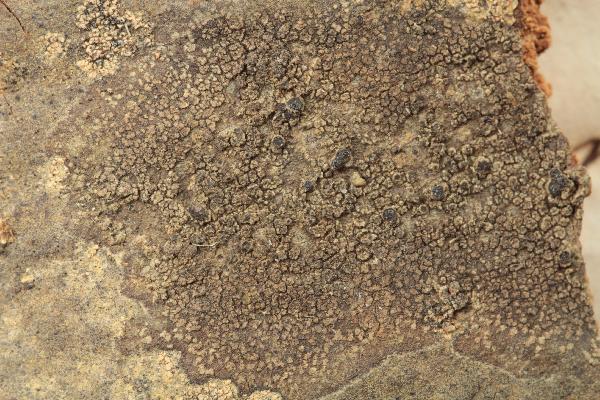
Collezione lichenologica Abramo Massalongo del Museo di Storia Naturale G. Ligabue di Venezia - Autori: Seggi, Linda; Trabucco, Raffaella Proprietà: Fondazione Musei Civici di Venezia - CC BY-NC
Italy, Veneto, in M. Alba
Growth form: Crustose
Substrata: bark
Photobiont: green algae other than Trentepohlia
Reproductive strategy: mainly sexual
Commonnes-rarity: (info)
Alpine belt: absent
Subalpine belt: absent
Oromediterranean belt: absent
Montane belt: rather rare
Submediterranean belt: very rare
Padanian area: absent
Humid submediterranean belt: rare
Humid mediterranean belt: absent
Dry mediterranean belt: absent

Predictive model
| Herbarium samples |


P.L. Nimis; Owner: Department of Life Sciences, University of Trieste
Herbarium: TSB (13035)
2002/05/13

Collezione lichenologica Abramo Massalongo del Museo di Storia Naturale G. Ligabue di Venezia - Autori: Seggi, Linda; Trabucco, Raffaella Proprietà: Fondazione Musei Civici di Venezia - CC BY-NC
Italy, Veneto, In M. Alba ad Fagos 1855

 INDEX FUNGORUM
INDEX FUNGORUM
 GBIF
GBIF
 DOLICHENS
DOLICHENS
